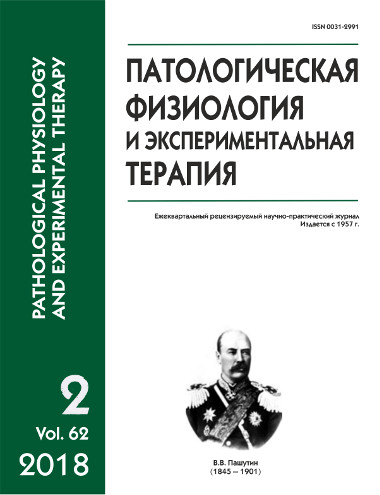Growth factors of the TGF-β family in blood of achondroplasia patients at stages of orthopedic treatment
DOI:
https://doi.org/10.25557/0031-2991.2018.02.70-76Keywords:
growth factors, blood serum, reparative osteogenesis, achondroplasia, height increase, transosseous osteosynthesisAbstract
Summary. Elaboration of simple and effective ways for managing the distraction rate to provide an optimum regimen of limb lengthening for different groups of patients is an important task in implementation of transosseous osteosynthesis. The aim of this study was to analyze blood serum concentrations of TGFβ-1, TGFβ-2, BMP-4, and BMP-6 in individuals undergoing cosmetic height increase and patients with achondroplasia at different stages of distraction osteogenesis in tibial lengthening using the Ilizarov method. Methods. Concentrations of growth factors were measured using a set of Thermofisher (USA) equipment, including a Multiscan FC detector, iEMS Shaker, and automatic WellWash Washer and ELISA kits (eBioscience and RayBiotech Inc., USA). Results. Serum concentrations of TGFβ-2 and BMP-4 were lower and TGFβ-1 and BMP-6 were higher in achondroplasia patients than in individuals with cosmetic height increase even before any orthopedic treatment. Long bone lengthening for cosmetic height increase was associated with increases in serum levels of TGFβ-1 and TGFβ-2 at the start and in the middle of distraction. In achondroplasia patients, opposite changes were observed; serum concentrations of BMP-4 and BMP-3 increased 3.5 and 2 times, respectively, by the end of distraction and decreased during fixation. Conclusion. Therefore, we observed a disorder of the stage-by-stage bone remodeling process in achondroplasia patients.Downloads
Published
2018-06-01
Issue
Section
Original research
How to Cite
[1]
2018. Growth factors of the TGF-β family in blood of achondroplasia patients at stages of orthopedic treatment. Patologicheskaya Fiziologiya i Eksperimental’naya Terapiya (Pathological physiology and experimental therapy). 62, 2 (Jun. 2018), 70–76. DOI:https://doi.org/10.25557/0031-2991.2018.02.70-76.






